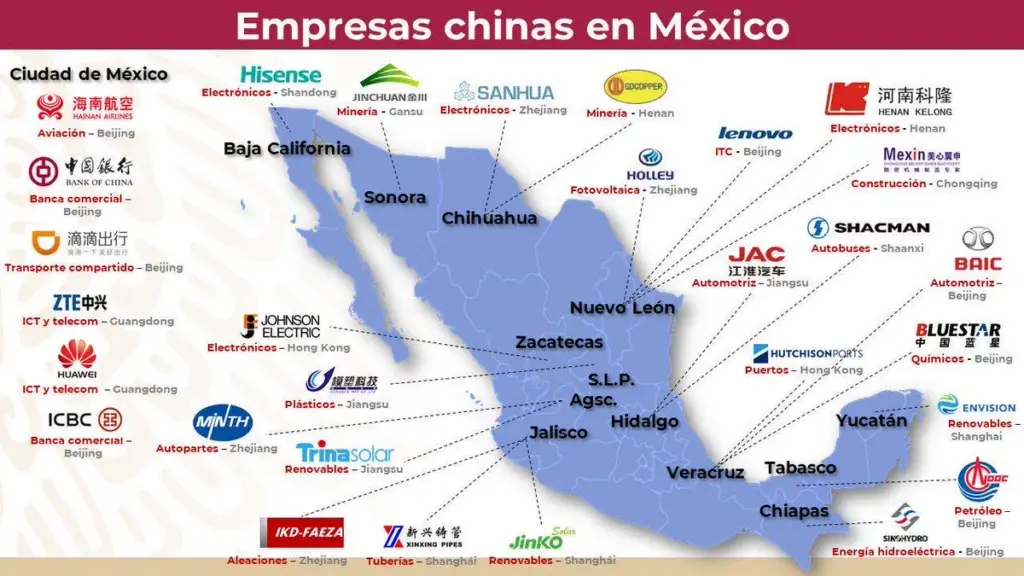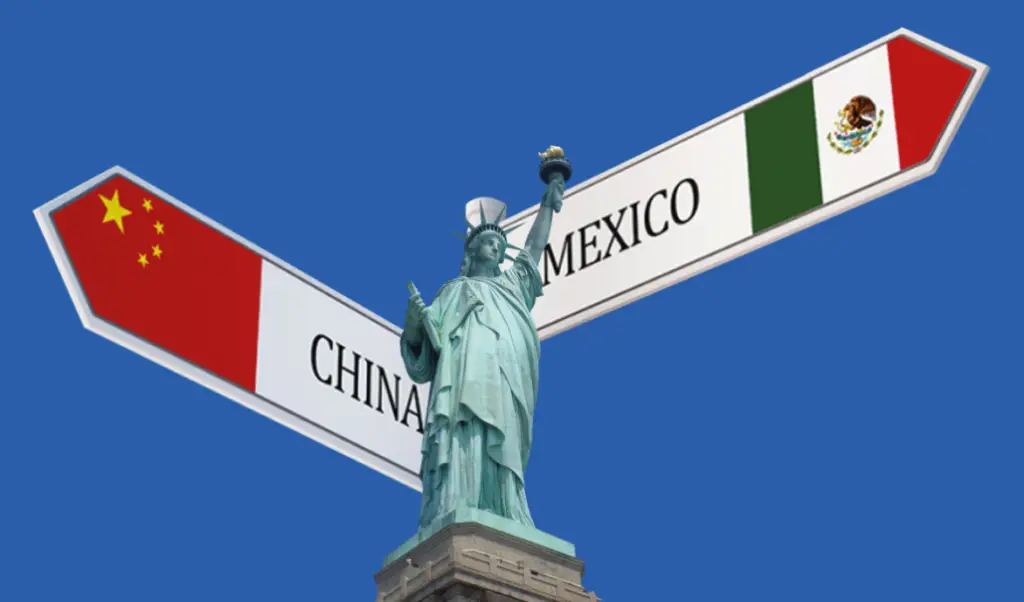Mexico ‘falls in love’ with Chinese firms: they accelerate investment in the country
Chinese companies take advantage of Mexico’s proximity to the world’s largest consumer market, in addition to taking advantage of the USMCA advantages.
Huawei, Xiaomi, ZTE, CNOOC, BAIC and DiDi see the country as a relevant market.
Mexico is becoming the perfect solution for Chinese manufacturers looking to sidestep U.S. tariffs and shorten supply chains devastated by the pandemic.

Plants and warehouses are springing up south of the US border, as companies take advantage of their proximity to the world’s largest consumer market.
“If you want to do good business with the US, you have to have something close to the market,” says Simon Huang, country manager for Kuka Home, a Chinese furniture maker with operations in the Hofusan Industrial Park, which is located in a privileged point between Monterrey, one of the main industrial cities of Mexico and the United States.
BAIC, DiDi, ZTE, Huawei, Xiaomi, Hisense, Bank of China and Sinohydro are some of the Chinese companies that, given the commercial conflict between their country and the United States and due to the relevance of the market, have accelerated their investments in Mexico, disbursing 14 billion dollars in the last 20 years, of which 42 percent was exercised between 2019 and 2020.
“The recent signing of the USMCA, as well as the trade conflicts with the United States and the low cost of labor in Mexico, even against China itself, make companies in this country bet on key sectors (…) The production of televisions and Technology, as well as automotive supply, are the main destination of these companies”, Mario Hernández, Leading Partner of the IMMEX segment of KPMG in Mexico, highlighted in an interview.
In the last two years, firms of Chinese origin invested in Mexico 5 thousand 831 million dollars of the 14 billion dollars that have been invested in the country in the last 20 years, according to the study “Monitor of the OFDI of China in Latin America and the Caribbean 2021” prepared by the Academic Network of Latin America and the Caribbean.
Abraham Fernández, director for the industrial sector of the real estate services firm Newmark, anticipated that between 2021 and 2025 a large number of Chinese companies will accelerate their investments in Mexico, due to the fact that approximately 70 thousand businessmen from that Asian nation took their investments from the United States.
Proximity to the US is not Mexico’s only advantage. Thanks to USMCA, a chair made at Kuka’s plant in Hofusan can cross the border duty-free, while one shipped to the US from China would carry a 25% tariff, Huang said.
:quality(70)/cloudfront-us-east-1.images.arcpublishing.com/bloomberglinea/6DSVHTDUB5B4WMAAOJ6MUI6GL4.png)
Chinese investment in Mexico rose from $154 million in 2016 to $271 million the following year, when Donald Trump took office threatening a trade war.
Supply chain problems caused by the pandemic and angst over Chinese President Xi Jinping’s tech crackdown have catapulted yet more Chinese companies into the Pacific, with investment in Mexico coming in at just under $500 million in 2021.
“At Newmark we believe that Mexico and China will strengthen their commercial relationship through nearshoring and catapult the Mexican industry, which in 2020 managed to close the foreign direct investment of the Asian giant with 1,542.5 million dollars,” said the manager in a recent report.
He explained that they work with the Mexico-China Chamber of Commerce and Technology to help Asian companies in the selection of a site to establish themselves in the country.
Mexico overtakes China as a trade partner with the US
During the first two months of 2021, Mexico regained its place as the main trading partner of the United States, covering 14.9 percent of the total trade that that nation had with the world, surpassing China in that place.
“This is a story in development since before 2019, when for the first time Mexico took the position of the largest partner of the United States after four years of leadership by China, preceded by Canada,” explained Edmundo Montaño, general director of Drip Capital Mexico, the firm specialized in financing.
The intention of Chinese companies is to take advantage of the benefits of the T-MEC, particularly in the automotive, energy and telecommunications sectors due to their proximity to the United States.
Chinese companies are not the first to seek refuge from US tariffs in Mexico. Japanese automakers began opening plants in the country in the 1990s in response to a spate of import restrictions that began under the Reagan administration.
Companies from China have faced some operational challenges in Mexico. The free trade agreement between the United States, Mexico and Canada, which replaced NAFTA, requires that a greater proportion of the value of any good come from North America to qualify for tariff exemption .

Mexico does not have extensive supplier networks in a large number of industries, which makes it difficult to obtain materials.
Some of the newcomers have other problems to deal with. Kuka Home’s Huang says his Mexican workers are more curious than those at home. “Mexicans always ask why: ‘Why should I do this?’ ‘Why should I do that?’” says Huang. “They want to understand the reason.”AD
Another difference: Workers in Mexico generally don’t work 16-hour days, as employees in China are willing to do.
For his part, the general director of Drip Capital Mexico, Edmundo Montaño, stressed that the country has the opportunity to absorb the production that moves from Asia since the USMCA gave security to have a competitive operating framework.
“Factors such as geographical proximity and the specialization that Mexico has managed to accumulate in recent years make it an attractive partner now that the United States begins to seek commercial independence from China,” Montaño acknowledged in a report.
Mexico became the third preferred destination for Chinese investment in Latin America in the last two years, with a share of 20.3 percent of the total, just below Chile (21.7 percent) and Brazil (21 percent).
“It is relevant to understand that if Chinese investment was concentrated in Brazil and partially in Argentina in the last 15 years, especially in the first decade of the 21st century, a new group of countries including Chile, Mexico, Colombia and Peru are the main destination of Chinese investment today,” said Enrique Dussel Peters, coordinator of the Center for China-Mexico Studies at UNAM and of the Academic Network of Latin America and the Caribbean on China (Red ALC-China).

State Power Investment Corp (SPIC) is the Chinese firm that has the largest investment in Mexico with 5 billion dollars, capital that was announced in January 2020.
In the last two years, Chinese investments generated 62 thousand 570 jobs, this amount represents 55.6 percent of the jobs generated by this company in the last two years.
For its part, the DiDi platform invested 10 million dollars in Mexico to deploy its DiDi Food application, which generated 57 thousand jobs.



